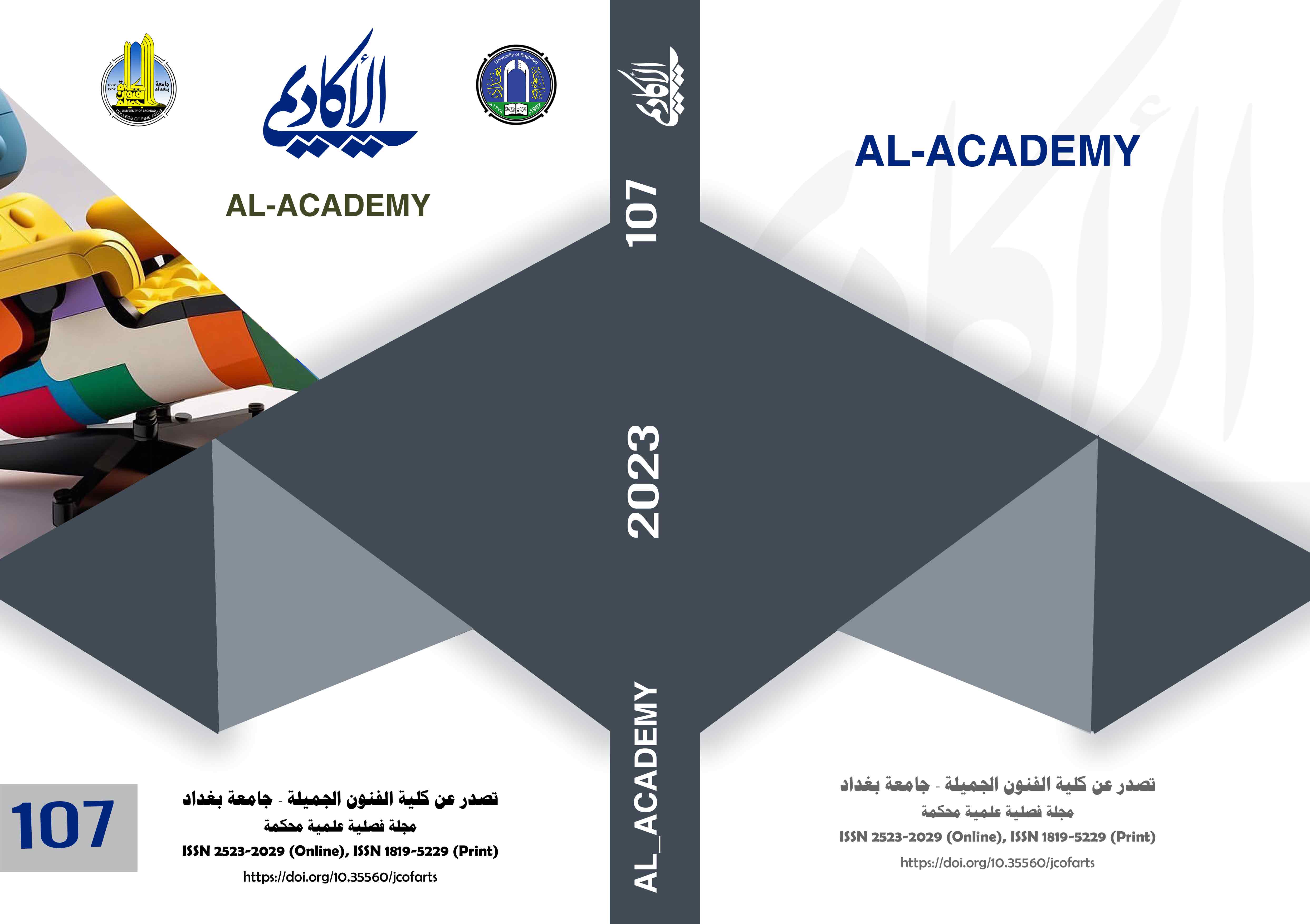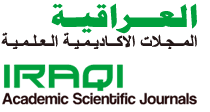The Developed Materials and Techniques and Its Role in Exposing the Aesthetic Of Art Work
DOI:
https://doi.org/10.35560/jcofarts107/161-182Keywords:
Developed Materials and Techniques - Aesthetic of the Art WorkAbstract
This study is targeting the new developed materials and techniques and how they were affected by the scientific and technological developments that contributed to revelated new and varied developed materials and techniques. And from the artist’s formulation by using the materials and techniques and through its embodiment and sensor the values, artistic and aesthetic standards by breaking from the familiar in aesthetic contemporary way.
The studies on questioning what’s the role of The New Developed Materials and Techniques in exposing the aesthetic of the art work?
This study is to show the aesthetic of the art work through the new developed materials and techniques. Which was based on descriptive analyzing method and highlighted as the result on the study on the importance of the new developed materials and techniques which is considered unusual to build and artwork and contains a different art values and to keep up with the new industrial innovations by using it in forming the art work which enriches the field of art. Moreover, developing contemporary art works based on the aesthetics of developed materials and techniques and by using the un traditional methods it made it possible to have a different creative texture of forming, which contributes to expose a unique aesthetics value together by using new developed material in one art work.
The study recommended the importance of following up the technology development of the materials and different possibilities of forming and the benefits in the art works. Furthermore, to raise aesthetic awareness by continuing on trying new materials and to figure out a new different forming connection in the art work.
References
Al-Ghammas, A. A.-R. (2020). Smart artistic typographic design between form and function. Jeddah: Jeddah University - College of Art and Design.
Ali, D. H. (2010). Art philosophy a new vision. Beirut, Lebanon: Al-Tanweer for printing, publishing and distribution, 1st edition.
Al-Mamouri, H. K. (2018). Aesthetics of visual arts in the light of technological developments. Istanbul: Ninth International Academic Scientific Conference.
Amhz, M. (1981). Contemporary Fine Art (Photography). Beirut, Lebanon: Triangle House for design, printing and publishing.
Attia, M. (1991). The purpose of art. Cairo: Knowledge House.
Bassiouni, M. (1989). Principles of art education. Cairo: Knowledge House.
Collingwood, R. G. (1980). principles of art. Cairo: Dar Al-Nahda General for Amiri Printing Affairs.
Hussein, M. I. (1994). The aesthetic concept of dealing with the material in modern sculpture and its impact on plastic and expressive values in the work of students of the Faculty of Art Education. Egypt: Helwan University.
Ibrahim, W. M. (n.d.). Aesthetics - historical and contemporary issues.
Ibrahim, Z. (1976). art problem. Cairo: Egypt Library.
Jassam, B. M. (2019). Art and trash. Al-Academy(92), 71-90. doi:https://doi.org/10.35560/jcofarts92/71-90
Jerome, S. (1981). Art criticism (Vol. the second). (t. b. Zakaria, Trans.) Egypt: Egyptian General Book Authority.
Lucy, E. (1995). Art Movements After World War II. (F. K. Ibrahim, Trans.) baghdad: General Cultural Affairs House.
Maatani, R. (1433). Digital technology and employing its capabilities in designing and implementing stereoscopic works of art. Makkah: Umm Al-Qura University - College of Education - Department of Art Education.
Nathan, N. (1987). The dialogue of vision is an introduction to the taste of art and the aesthetic experience. (Vol. The first). (F. K. Jabra, Trans.) Baghdad: Dar Al-Ma'moun for translation and publishing.
Oudat, M. M. (2013, 7). Industrial plastics as an innovative plastic raw material and its role in enriching aesthetic values in contemporary artifacts. Education World Journal, pp. 385-425.
Rashid, G. M. (n.d.). Materials in Postmodern Art. University of Babylon/College of Fine Arts.
Rauschenberg, R. (2008). http://www.adabfan.com.
Reid, H. (1994). modern sculpture. (F. Khalil, Trans.) Baghdad: Dar Al-Ma'moun for translation and publishing.
Saleh, M. H. (1998). Experimental approaches to enrich the field of artistic works in light of the trends of modern art. Egypt: Helwan University.
Smith, E. L.-B. (1989). Brief history of modern painting. Beirut.
Zaabi, Z. (1990). Arts through the ages. Kuwait: Dar Al Orouba for publication and distribution.
Downloads
Published
Issue
Section
License
Copyright (c) 2023 Hussa bint Abdul Karim bin Saleh Al-Mohammed, Faten Helal Helal

This work is licensed under a Creative Commons Attribution 4.0 International License.













